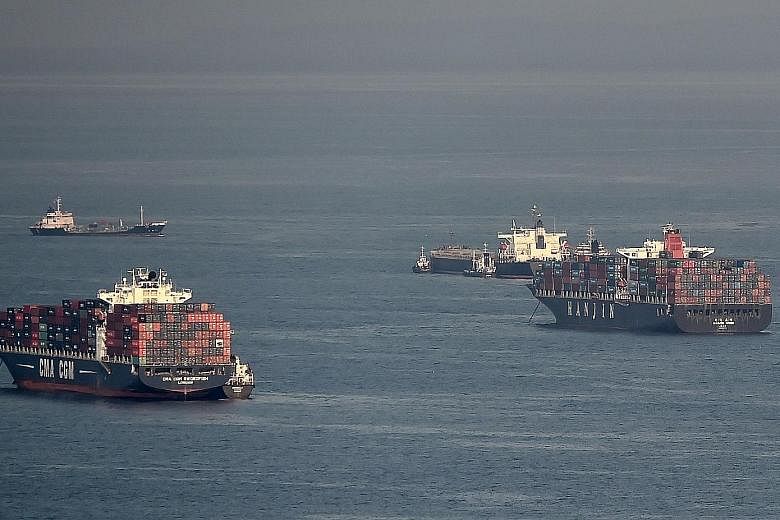LONDON/FRANKFURT • Germany's banks are struggling to recoup tens of billions of dollars in loans as the global shipping industry slump hits them hard.
The lenders - among the biggest backers of ship owners over the past 20 years - are behind up to a quarter of the world's US$400 billion (S$545 billion) of outstanding shipping loans, three shipping financiers told Reuters. This would make them collectively more exposed than banks from any other country in terms of outstanding debt to the sector.
These institutions are now grappling with the near decade-long slump in parts of the shipping sector since the 2008 financial crisis that is also hurting European peers such as Britain's Royal Bank of Scotland.
"German banks account for close to US$100 billion of shipping debt out of a world total of around US$400 billion," said Mr Dagfinn Lunde, a former head of shipping at Germany's DVB Bank.
The same estimates of German bank exposure and total sector debt were made by two other shipping finance executives, who declined to be named, citing the confidentiality of their business dealings.
Mr Lunde, now a board member at Norway's Maritime and Merchant Bank, said German lenders had "thrown money" at the sector when shipping business was brisk. "When the values tumbled, they were left with massive exposure to toxic debt."
As worsening conditions in the sector leave some ship owners unable to meet payments, it is unlikely that many banks will see a full return on their investments. This could leave them having to sell down their debt at a discount to distressed buyers or to write off some loans.
The shipping difficulties come at a time when European banks are already bogged down by a sluggish economy and face tough capital demands from regulators which are eroding profitability.
Segments of the shipping industry are suffering their deepest downturn ever as international trade slows. Around 90 per cent of world trade is transported by sea.
South Korean container line Hanjin, which filed for receivership on Aug 31, is the latest casualty in a crisis exacerbated by a glut of ships, many of which were built before the financial crisis.
"It seems like the shipbuilding and ship finance sectors are... imploding," Mr Anthony Gurnee, chief executive of ship operator Ardmore Shipping, told an industry conference in London last week.
Before the financial crisis, when a dry bulk ship or oil tanker could earn over US$200,000 a day, German banks were among the most prominent financing players. Such vessels now command around US$10,000 to US$15,000 a day.
Banks' exposure varies widely across German lenders such as Deutsche Bank, Commerzbank and state-backed lender NordLB. Commerzbank and Deutsche Bank declined to comment on their shipping finance activities.
"For German ship owners, Hanjin is bad news as, for them, a large company falls away with which they can charter their ships," said Mr Oliver Faak, global head of ship and aircraft finance at NordLB.
He said that the outlook for the oil tanker market was worsening. "Many shipping companies have ordered tankers that are now being delivered. Supply is rising but the demand hasn't changed."
REUTERS

